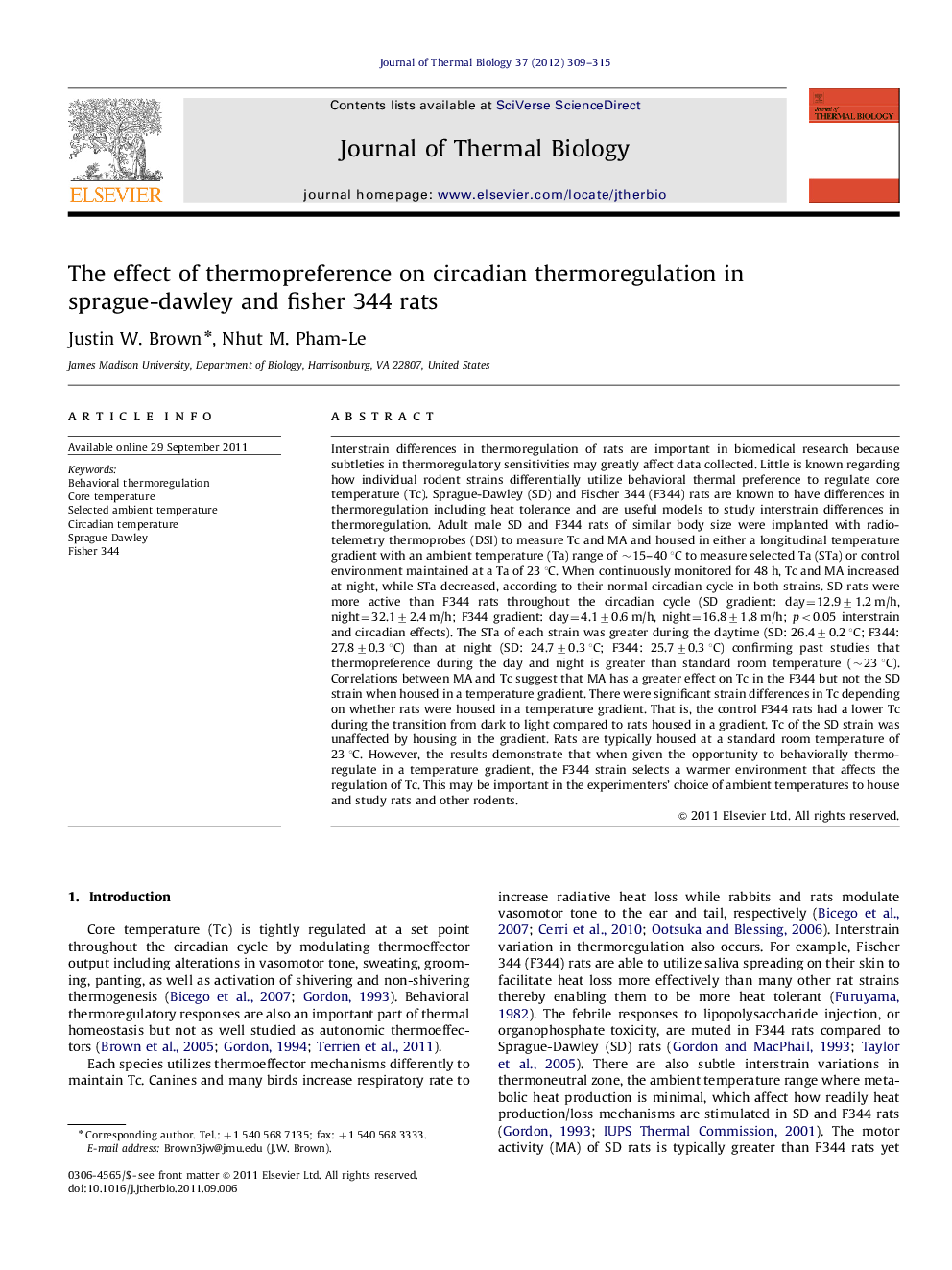| کد مقاله | کد نشریه | سال انتشار | مقاله انگلیسی | نسخه تمام متن |
|---|---|---|---|---|
| 2843295 | 1166085 | 2012 | 7 صفحه PDF | دانلود رایگان |
عنوان انگلیسی مقاله ISI
The effect of thermopreference on circadian thermoregulation in sprague-dawley and fisher 344 rats
دانلود مقاله + سفارش ترجمه
دانلود مقاله ISI انگلیسی
رایگان برای ایرانیان
کلمات کلیدی
موضوعات مرتبط
علوم زیستی و بیوفناوری
علوم کشاورزی و بیولوژیک
علوم کشاورزی و بیولوژیک (عمومی)
پیش نمایش صفحه اول مقاله

چکیده انگلیسی
Interstrain differences in thermoregulation of rats are important in biomedical research because subtleties in thermoregulatory sensitivities may greatly affect data collected. Little is known regarding how individual rodent strains differentially utilize behavioral thermal preference to regulate core temperature (Tc). Sprague-Dawley (SD) and Fischer 344 (F344) rats are known to have differences in thermoregulation including heat tolerance and are useful models to study interstrain differences in thermoregulation. Adult male SD and F344 rats of similar body size were implanted with radiotelemetry thermoprobes (DSI) to measure Tc and MA and housed in either a longitudinal temperature gradient with an ambient temperature (Ta) range of â¼15-40 °C to measure selected Ta (STa) or control environment maintained at a Ta of 23 °C. When continuously monitored for 48 h, Tc and MA increased at night, while STa decreased, according to their normal circadian cycle in both strains. SD rats were more active than F344 rats throughout the circadian cycle (SD gradient: day=12.9±1.2 m/h, night=32.1±2.4 m/h; F344 gradient: day=4.1±0.6 m/h, night=16.8±1.8 m/h; p<0.05 interstrain and circadian effects). The STa of each strain was greater during the daytime (SD: 26.4±0.2 °C; F344: 27.8±0.3 °C) than at night (SD: 24.7±0.3 °C; F344: 25.7±0.3 °C) confirming past studies that thermopreference during the day and night is greater than standard room temperature (â¼23 °C). Correlations between MA and Tc suggest that MA has a greater effect on Tc in the F344 but not the SD strain when housed in a temperature gradient. There were significant strain differences in Tc depending on whether rats were housed in a temperature gradient. That is, the control F344 rats had a lower Tc during the transition from dark to light compared to rats housed in a gradient. Tc of the SD strain was unaffected by housing in the gradient. Rats are typically housed at a standard room temperature of 23 °C. However, the results demonstrate that when given the opportunity to behaviorally thermoregulate in a temperature gradient, the F344 strain selects a warmer environment that affects the regulation of Tc. This may be important in the experimenters' choice of ambient temperatures to house and study rats and other rodents.
ناشر
Database: Elsevier - ScienceDirect (ساینس دایرکت)
Journal: Journal of Thermal Biology - Volume 37, Issue 4, July 2012, Pages 309-315
Journal: Journal of Thermal Biology - Volume 37, Issue 4, July 2012, Pages 309-315
نویسندگان
Justin W. Brown, Nhut M. Pham-Le,